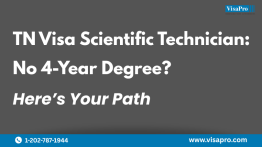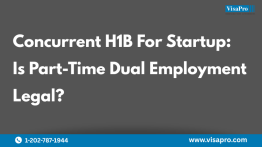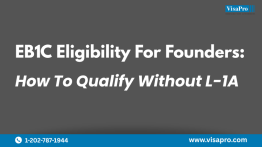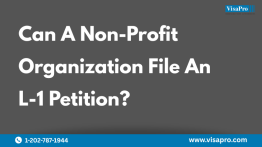The U.S. Department of Homeland Security (DHS) has published a Final Rule aimed at modernizing and improving the efficiency of the H-1B program, adding benefits, flexibilities, and improved integrity measures. The provisions of the new rule, which will be effective 1/17/25, mainly amend the regulations governing the H–1B program, although some of the provisions impact other nonimmigrant work classifications such as H-2, H-3, F-1, L-1, O, P, Q-1, R-1, E-3, and TN.
Through this new rule, DHS has finalized many of the provisions proposed in a Notice of Proposed Rulemaking (NPRM) titled “Modernizing H–1B Requirements, Providing Flexibility in the F–1 Program, and Program Improvements Affecting Other Nonimmigrant Workers” that was published in October 2023. It’s important to note that DHS had already finalized a part of the NPRM earlier this year, specifically relating to H-1B registration “Improving the H-1B Registration Selection Process and Program Integrity” that was published in February 2024.
Some of the key amendments brought about by the newly released final rule include:
1.Definition of “Specialty Occupation” Expanded
DHS has revised the regulatory definition and criteria for a position to be deemed a “specialty occupation”. DHS has clarified that “normally” does not mean “always”, and “directly related” means “a logical connection”, within the criteria for a specialty occupation, thus expanding the scope of the “Speciality Occupation” definition.
2.Range of Qualifying Degrees OK for Specialty Occupation
DHS has codified the current practice that while generalized degree is not sufficient, a position may allow for a range of qualifying degree fields. An H-1B employer may accept a range of qualifying degree fields as sufficient to qualify for the position, but the required field(s) must be directly related to the job duties in order for the position to be deemed a specialty occupation.
3.H-1B Cap Gap Extended from October 1 to April 1
DHS has extended the automatic cap-gap extension end date from October 1 to April 1 of the fiscal year for which H-1B status is being requested. This provision provides greater flexibility to students seeking to change their status to H–1B by automatically extending the duration of their F-1 status, and any employment authorization granted until April 1 of the relevant fiscal year.
Illustration:
- Currently: If F-1 OPT expires on August 1, and an H-1B Cap petition is filed by August 1, Cap Gap extends F-1 OPT until October 1 of the same calendar year. If the H-1B is not approved by September 30, then the F-1 student must stop working.
- Under the new rule: If F-1 OPT expires on August 1, and an H-1B Cap petition is filed by August 1, Cap Gap extends F-1 OPT until April 1st of the next calendar year. The F-1 student can continue working until a decision made on the H-1B or until March 30th of the next calendar year, whichever happens first. If the H-1B is approved by March 30th, they can continue working without interruption.
4. Amendment for Change of H-1B Work Location
DHS has clarified when an amended or a new H-1B petition must be filed due to a change in an H-1B worker’s place of employment, updating the related regulations to be consistent with current policy guidance.
5.Deference for Previously Approved Petitions
DHS has codified its current deference policy to clarify that, when adjudicating a petition for a work visas classification, such as the H-1B or L-1, involving the same parties and the same underlying facts, USCIS generally should defer to its prior determination on eligibility, unless a material error in the prior approval is discovered or other material change or information impacts the petitioner’s, beneficiary’s, or applicant’s eligibility.
6.Allowing Petitioners to Update H-1B Validity Dates After a Long Delay
DHS has updated the regulations to allow H-1B petitions to be approved or have their requested validity period dates extended if USCIS adjudicates and deems the petition approvable after the initially requested validity period end-date, or the period for which eligibility has passed. Aimed at petitions that have been pending an extended period of time, oftentimes due to a Motion to Reopen, Motion to Reconsider, or Appeal, this updated regulation will allow USCIS to issue an RFE asking the Petitioner if they wish to update the intended dates of employment. Petitioners will be allowed to update the dates of employment and submit a new Labor Condition Application.
7.The H-1B for Entrepreneurs
DHS has codified a U.S. employer’s ability to file an H-1B petition on behalf of a Beneficiary who possesses a controlling interest in the company. DHS has confirmed that certain owners of a petitioning entity are eligible for H–1B status and will add specific parameters for these situations. At the same time, DHS will be placing certain limits to avoid abuses of the H-1B. H-1B Entrepreneurs can only seek 18 months for the initial H-1B and for the first extension. Subsequent extensions will not be limited.
8.Changes to H-1B Cap Exempt Employer definition
DHS has revised the requirements to qualify for the H-1B cap exemption when a Beneficiary is not directly employed by a qualifying institution, organization, or entity. Specifically, DHS is expanding the scope of eligible petitioners by changing the definition of “nonprofit research organization” and “governmental research organization” by replacing the terms “primarily engaged” and “primary mission” with “fundamental activity“. This will allow nonprofit entities or governmental research organizations that conduct research as a fundamental activity but are not primarily engaged in research to meet the definition of a nonprofit research entity or governmental research organization for purposes of establishing exemption from the annual statutory limit on H–1B visas.
DHS has also revised the regulations to recognize that certain Beneficiaries may qualify for H-1B cap exemption when they are not directly employed by a qualifying organization, but still spend at least half of their time providing essential work that supports or advances a fundamental purpose, mission, objective, or function of the qualifying organization.
The updated definitions provide additional flexibilities for nonprofit and governmental research organizations and petitions for certain Beneficiaries who are not directly employed by a qualifying organization, enabling petitioners who now come under the purview of the expanded definitions to avoid the H-1B cap lottery and instead file an H-1B petition any time of the year without being subject to the H-1B cap and lottery.
9.Evidence Regarding Maintenance of Status
DHS has updated the regulations to expressly requiring that evidence of the beneficiary’s maintenance of status must be included with a petition seeking an extension or amendment of stay for petitioner seeking the services of an E-1, E-2, E-3, H-1B, H-1B1, H-2A, H-2B, H-3, L-1, O-1, O-2, P-1, P-2, P-3, Q-1, R-1, or TN beneficiary.
10.Eliminating the H-1B Itinerary Requirement
DHS has eliminated the itinerary requirement for petitions seeking H-1B where the beneficiary will be working off-site or at more than one location.
11.Third Party Placement
DHS has clarified that if an H–1B worker will be staffed to a third party, meaning will be contracted to fill a position in the third party’s organization, the work to be performed by the beneficiary for the third party must be in a specialty occupation, and it is the requirements of that third party, and not the petitioner, that are most relevant when determining whether the position is a specialty occupation.
12.In addition to the above, the new rule also proposes to strengthen the integrity of the H-1B program by
- requiring that the petitioner establish that it has a bona fide position in a specialty occupation available for the beneficiary as of the requested start date;
- codifying its authority to request contracts or similar evidence to determine if the position is bona fide;
- ensuring that the LCA supports and properly corresponds to the petition;
- revising the definition of “United States employer” by codifying current DHS policy that the petitioner have a bona fide job offer for the beneficiary to work within the United States as of the requested start date and adding a requirement that the petitioner have a legal presence and be amenable to service of process in the United States; and
- codifying its authority to conduct site visits, clarify that refusal to comply with site visits may result in denial or revocation of the petition.
DHS has also announced that a new edition of Form I-129, Petition for a Nonimmigrant Worker will be required for all petitions beginning Jan. 17, 2025, and USCIS will soon publish a preview version of the new Form I-129 edition. Previous editions of the form will not be accepted after that date. We will continue to monitor the developments related to the updated H-1B regulations and will keep our readers updated.
If you have any questions regarding the new changes to the H-1B program or your eligibility to qualify for the H-1B or any work visa, contact VisaPro Law Firm today. Our experienced immigration attorneys will be happy to assist you.
View All Categories
Work Visas | Family Visas | Green Cards | Startup Visas | Visitor Visas | US Citizenship | Student Visas | Other US Visas | Investor Visas




